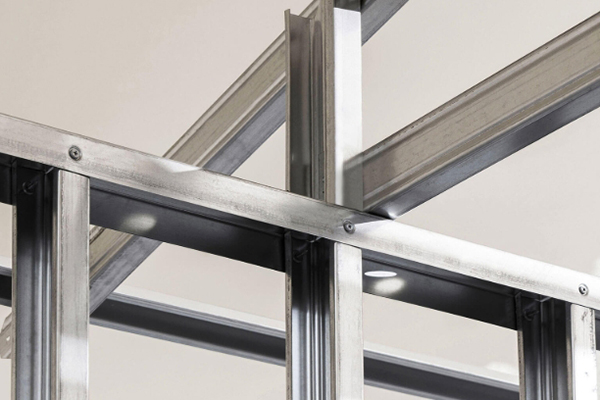Steel studs have become a popular alternative to wood framing in both commercial and residential construction. Lightweight, fire-resistant, and not susceptible to termites or rot, steel studs offer numerous advantages. However, not all steel studs serve the same purpose. One of the most important distinctions to understand is the difference between structural and non-structural steel studs.

Both types may look similar at first glance, but they differ in material strength, intended use, load-bearing capacity, and manufacturing specifications. Let’s explore what sets them apart.
1. Purpose and Application
The primary difference between structural and non-structural steel studs lies in how they are used in construction.
-
Structural steel studs are designed to carry loads. This includes supporting walls, floors, roofs, and other parts of the building’s framework. They are commonly used in exterior walls or load-bearing interior walls in both high-rise commercial buildings and multi-story residential projects.
-
Non-structural steel studs, also called drywall studs or light-gauge framing studs, are used in partition walls or non-load-bearing interior framing. They only serve as a framework to hold drywall or finishing materials, without supporting structural loads.
2. Material Thickness and Strength
Structural steel studs are made from thicker gauge steel compared to non-structural ones. Gauge refers to the thickness of the steel: the lower the gauge number, the thicker and stronger the steel.
-
Structural studs typically range from 16 gauge (about 0.054 inch or 1.37 mm thick) to 20 gauge (0.033 inch or 0.84 mm). These heavier gauges allow them to bear significant weight.
-
Non-structural studs are usually made from 25 or 26 gauge steel (around 0.018 to 0.022 inch or 0.45 to 0.56 mm thick). They are much lighter and easier to cut but cannot support heavy loads.
This difference in thickness directly affects the rigidity and load-bearing capacity of the studs.
3. Code Requirements and Standards
Building codes often dictate whether structural or non-structural studs must be used, especially in commercial projects.
-
Structural steel studs must meet stricter manufacturing standards, such as those defined by the American Iron and Steel Institute (AISI) and ASTM International, to ensure that they can safely support expected loads. They are usually labeled with performance data, including allowable load ratings.
-
Non-structural studs are not held to the same rigorous standards because they do not carry building loads. Their primary job is to hold drywall, insulation, or light fixtures.
Builders and architects rely on structural engineering calculations to determine when structural studs are needed and how they should be spaced and reinforced.
4. Cost and Labor Considerations
Because they use thicker steel and require more precision in installation, structural steel studs tend to be more expensive both in material cost and labor.
-
Structural studs are heavier, harder to cut, and require specialized tools or training to install correctly.
-
Non-structural studs are easier to handle and are ideal for fast, cost-effective interior partitioning, especially in office buildings or renovation projects.
5. Identifying the Right Type
How can you tell the difference between structural and non-structural steel studs?
-
Labeling: Structural studs are often labeled as “structural” or “structural C studs”, with additional information such as gauge, flange size, and load capacity.
-
Feel and weight: Structural studs are noticeably heavier and more rigid when handled.
-
Use context: If the studs are being used on an exterior wall or in a multistory structure, they are likely structural. If used in a simple drywall partition in an office, they are probably non-structural.
Conclusion
In summary, structural steel studs are built for strength and used in load-bearing applications, while non-structural steel studs serve primarily as framing for interior partitions and finishes. Understanding the difference is critical for safe, code-compliant, and efficient building practices.
Choosing the correct type depends on your project’s structural needs, building codes, and budget. For anything involving load support or exterior framing, structural studs are essential. For non-load-bearing interior walls, non-structural studs are usually sufficient and more cost-effective.
Post time: Jul-18-2025



